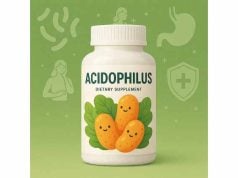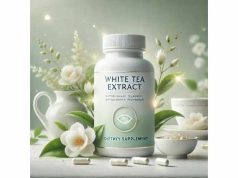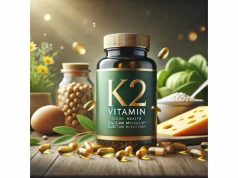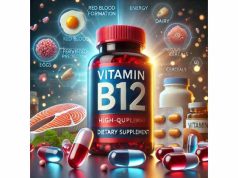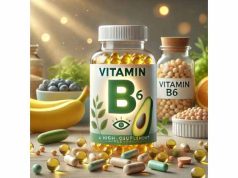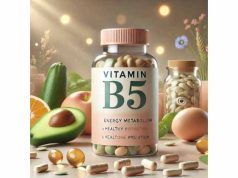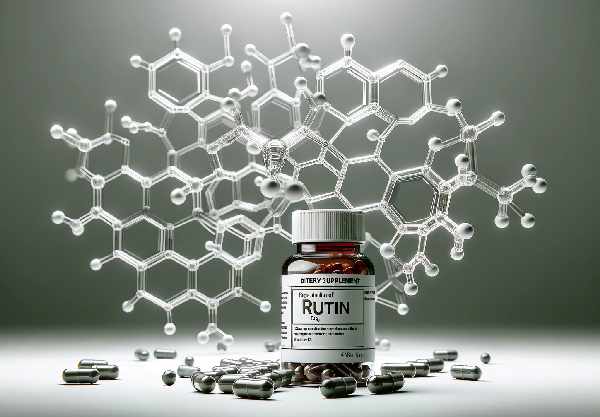
Rutin, a natural bioflavonoid found in various fruits, vegetables, and medicinal plants, has steadily earned a reputation for its positive impact on eye health. By helping reinforce blood vessel integrity and reducing the burden of oxidative stress, Rutin offers a convenient pathway toward maintaining healthy eyesight. Many individuals value Rutin as part of a proactive approach to visual wellness, especially as modern lifestyles often involve prolonged screen time, exposure to environmental pollutants, and dietary imbalances. This article delves into how Rutin may help preserve and improve vision, and why it has become a go-to choice for those seeking holistic ocular support.
Table of Contents
- What is Rutin and Where Does It Come From?
- Mechanisms by Which Rutin Supports Vision
- Key Eye Health Perks of Rutin
- Practical Strategies for Using Rutin Effectively
- Scientific Studies and Evidence
- Frequently Asked Questions
- References and Source Documentation
What is Rutin and Where Does It Come From?
Rutin is classified as a flavonoid—a group of plant-based compounds celebrated for their antioxidant capabilities and possible health benefits. Also known as vitamin P or rutoside, Rutin is typically extracted from certain fruits, vegetables, and plant-based sources. Common examples include apples, berries, buckwheat, and citrus fruits. Some individuals already consume small amounts of Rutin simply by following a balanced diet. However, many opt for a more concentrated supplement form when seeking targeted benefits.
Chemical Characteristics and Structure
A flavonol by nature, Rutin consists of quercetin (another well-known flavonoid) bound to a sugar molecule called rutinose. This distinctive structural element influences Rutin’s biological activity and how it interacts with cells in the human body. Because it is water-soluble, Rutin is often easily absorbed, although its bioavailability can depend on various factors including dosage, meal composition, and individual metabolic differences.
Historical and Traditional Uses
Though its scientific recognition has grown significantly in recent years, Rutin’s roots in traditional medicine are longstanding. It has been used across different cultures for issues relating to blood vessel health, inflammatory processes, and resistance to oxidative stress. Traditional applications include:
- Reducing Swelling: Some traditional remedies leveraged Rutin-rich plants to help soothe localized swelling or bruising.
- Improving Circulation: Rutin has been associated with strengthening blood vessels, which can promote better circulation.
- General Well-Being: A variety of traditional systems, including certain forms of herbalism, revere Rutin’s broader health support.
Although early uses were not always tied specifically to vision, many cultures recognized that healthy circulation and lower inflammation also contribute to the maintenance of clear eyesight.
Why the Spotlight on Eye Health?
Interest in Rutin for Vision Improvement has heightened as people search for natural ways to protect their eyes from everyday strains—digital devices, bright lights, or environmental pollutants. Several of Rutin’s properties, such as antioxidant and anti-inflammatory actions, intersect strongly with what the eyes need to remain vibrant. Additionally, Rutin’s ability to reinforce capillary strength is especially relevant to the retina and other ocular tissues reliant on a steady nutrient flow.
Sources and Dietary Intake
Numerous fruits, herbs, and vegetables provide moderate to high levels of Rutin. You can find it in:
- Buckwheat: Notably high in Rutin, making it a frequent dietary source.
- Apples (especially with the peel): Contain Rutin alongside other flavonoids like quercetin.
- Citrus Fruits: Their pulp and rinds often harbor Rutin.
- Mulberries and Berries: Various berries are known to offer a flavonoid-rich profile that may help boost overall eye health.
Dietary intake alone might suffice for some people. Nonetheless, those with specific health or vision goals could consider a Rutin supplement for an extra boost. Next, let us examine how Rutin actually benefits your vision at a deeper, mechanistic level.
Mechanisms by Which Rutin Supports Vision
Rutin plays an intriguing role in ocular wellness by influencing several distinct processes. Understanding how these processes function can clarify why so many people consider Rutin a pivotal supplement for eye health.
1. Antioxidant Activity Shields Ocular Tissues
Every day, the eyes are subjected to potential oxidative harm from environmental factors such as ultraviolet radiation, blue light from screens, and air pollutants. Unchecked oxidative stress can compromise the retina, lens, and other delicate structures, progressively undermining visual clarity. Rutin is recognized for its antioxidant potential, which helps neutralize excess free radicals that could otherwise damage these sensitive tissues.
Within the eye, specialized cells require defense against reactive oxygen species (ROS). By donating electrons or stabilizing free radicals, Rutin helps preserve the function and integrity of the rods and cones. These photoreceptor cells are responsible for receiving and processing light, an essential step in how we see.
2. Support for Healthy Circulation and Vessel Integrity
Proper blood flow is fundamental to maintaining the delivery of nutrients to ocular tissues and for the efficient removal of waste products. One key aspect of Rutin’s reputation lies in its capacity to reinforce capillary walls and bolster vascular health. By promoting stronger and more flexible blood vessels, Rutin may improve how oxygen and nutrients reach the eyes. An enhanced microcirculation could translate to more thorough nourishment for the retina, which, in turn, may support more resilient vision.
3. Anti-Inflammatory Benefits that Safeguard Vision
Chronic inflammation is frequently linked to eye discomfort, dryness, and age-related challenges affecting vision quality. Rutin’s anti-inflammatory properties can help moderate inflammation in the delicate tissues of the eye. This moderation is crucial because inflammation often accelerates deterioration of various ocular components, sometimes leading to issues like macular stress or early-onset difficulties in focusing.
By mitigating this inflammatory burden, Rutin not only preserves existing eye structures but also helps guard against future complications. The synergy between antioxidant and anti-inflammatory actions is vital in controlling tissue breakdown and enhancing long-term eyesight preservation.
4. Protective Effects on the Lens
The lens of the eye enables focus; any changes in transparency or flexibility can result in blurred vision. Oxidation and prolonged inflammation can make the lens more prone to cloudiness, hampering visual acuity. Rutin’s antioxidant shielding, combined with its vascular support, may help maintain the lens’ clear condition. While no single compound can entirely stop age-related changes, Rutin could contribute to a more gradual, less problematic shift over time.
5. Potential Role in Intraocular Pressure Management
Although not as extensively studied, some preliminary inquiries suggest that Rutin might have a role in stabilizing or supporting healthy intraocular pressure (IOP). Elevated IOP can lead to damage in the optic nerve over time if not managed well. Rutin’s circulatory benefits, along with its potential neuroprotective properties, could factor into a broader plan for eye-care strategies. However, more robust clinical trials are needed to fully elucidate Rutin’s influence on IOP in humans.
6. Partnering with Other Eye-Supportive Nutrients
Rutin does not work in isolation. It synergizes well with other known eye-health components, such as vitamin C, lutein, zeaxanthin, bilberry extract, and vitamin E. When used as part of a balanced supplement strategy, Rutin may amplify or reinforce the contributions of these other nutrients. For instance, vitamin C is often touted for bolstering collagen synthesis in ocular tissues, while lutein and zeaxanthin concentrate in the retina to safeguard against specific types of light-induced damage. In tandem, these compounds can build a multifaceted shield for your eyes.
By tapping into these multiple pathways—antioxidant support, improved vessel robustness, reduced inflammation, and possibly even IOP modulation—Rutin helps stabilize and potentially enhance visual clarity. Let us explore the more tangible benefits these mechanisms produce for daily eye health and comfort.
Key Eye Health Perks of Rutin
Rutin Vision Benefits encompass both preventive and supportive actions that may help you maintain healthy, sharp eyesight in the face of modern-day challenges. Below are some notable ways Rutin may elevate your overall ocular well-being.
1. Enhanced Retinal Protection
The retina, a thin tissue at the back of the eye, is densely packed with photoreceptors that convert light signals into electrical impulses. Oxidative stress and excessive inflammation can gradually degrade this delicate layer. By providing robust antioxidant support, Rutin could decrease the risk of premature retinal damage. Healthier retinal cells are often associated with better color perception, sharper detail, and sustained clarity.
2. Reduced Light Sensitivity
Some individuals experience discomfort or even pain when moving from dim to bright environments. This heightened light sensitivity, sometimes called photophobia, can be linked to irritation or inflammatory processes within the eye. Anecdotal and preliminary findings suggest that Rutin’s anti-inflammatory influence might help moderate this response. Over time, maintaining more balanced inflammation levels could improve tolerance to varying light conditions.
3. Support for Optimal Lens Clarity
When proteins in the lens get damaged or clump together, the lens can become cloudy and hamper vision. Although age-related changes cannot be fully avoided, sustaining antioxidant defenses through Rutin supplementation helps stave off the level of oxidative damage that contributes to lens opacity. This strategy, supported by a healthy lifestyle, could help you preserve crisp, unclouded vision for a longer duration.
4. Eye Comfort and Hydration
While dryness may not always be the first issue that comes to mind with eye health, an inadequate tear film can result in irritated, burning sensations. Though direct evidence linking Rutin to tear film quality is limited, its potential to reduce inflammation can indirectly ease symptoms of dryness. In addition, improved microcirculation around the ocular region might further support stable tear production and distribution.
5. Potential Aid Against Digital Strain
Modern life revolves around screens—smartphones, tablets, computers—leading to prolonged periods of intense near-focus. This digital overload contributes to eye fatigue, dryness, and potential strain on various ocular components. Rutin’s synergy of antioxidant and vascular support could help buffer some of the stress induced by extended screen time. While it is no standalone solution to digital eye strain, pairing Rutin with healthy screen habits (like regular breaks and anti-glare measures) might optimize comfort.
6. Beneficial Ripple Effects on General Health
Systemic health strongly correlates with visual health. Because Rutin’s effects extend beyond the eyes—such as promoting better blood vessel function and normal inflammatory response—these broader advantages also support ocular wellness. For instance, strong cardiovascular health ensures a stable, nutrient-rich blood supply to the eyes. Consequently, taking Rutin for Eye Health may also complement your overall wellness objectives.
7. Holistic Vision Protection Approach
Rutin’s role in the eyes is not merely a single mechanism. Rather, it addresses overlapping factors that contribute to vision decline: oxidative damage, poor circulation, and chronic inflammation. By targeting all these elements, Rutin provides a comprehensive framework for preserving the longevity and resilience of visual acuity.
With these benefits in mind, you may now wonder how to integrate Rutin effectively into daily routines. The next section tackles best practices, dosage considerations, and product selection tips, helping you harness Rutin’s attributes for maximum advantage.
Practical Strategies for Using Rutin Effectively
Incorporating Rutin into your vision-care routine can be straightforward, provided you follow evidence-based guidelines and adopt a consistent approach. This section outlines how to choose a suitable supplement, how much to take, and the lifestyle factors that enhance Rutin’s potential impact.
1. Selecting a High-Quality Supplement
Not all supplements are created equal. Look for well-established brands that emphasize purity and standardization. Labels should clearly indicate the Rutin content per serving, and reputable products often undergo third-party testing to confirm potency. Make sure there are minimal fillers or additives, particularly if you have allergies or sensitivities.
Common Rutin supplement forms include:
- Capsules: Possibly the most convenient, often available in different potencies.
- Powder: Mixable with smoothies or juices, useful if you prefer a more flexible dosage approach.
- Combination Formulas: Some manufacturers blend Rutin with vitamin C, quercetin, or other vision-friendly nutrients to offer a comprehensive eye support formula.
2. Recommended Dosage Guidelines
General adult dosage for Rutin can span from 250 mg to 500 mg daily when targeting long-term health maintenance. Some individuals aiming for specific therapeutic effects, such as reducing localized inflammation or supporting eye health, may consider higher doses—often up to 1,000 mg or more. However, it is crucial to consult a healthcare professional for personalized advice.
Tips for effective dosing:
- Start Low, Go Slow: If you are new to Rutin, begin with a conservative dose. Gradually increase as your body adjusts.
- Split Doses: Distributing your daily amount into smaller doses throughout the day can support more consistent blood levels and potentially reduce gastrointestinal discomfort.
- Timing: You can take Rutin with meals to enhance absorption, particularly if your diet includes healthy fats that could further help your body process the supplement.
3. Pairing Rutin with Other Eye-Supportive Compounds
Rutin complements various nutrients known to aid vision, such as lutein, zeaxanthin, vitamin C, and bilberry extract. In fact, combining Rutin with vitamin C can enhance the absorption of both substances, creating a more potent antioxidant synergy. Consider a well-designed vision formula that includes these compounds or combine them intelligently in your daily supplement regimen, ensuring you do not exceed recommended intakes.
4. Lifestyle Habits that Amplify Rutin’s Benefits
No supplement can entirely overcome unhealthy lifestyle practices. To maximize Rutin’s eye-supportive potential, integrate the following habits into your daily life:
- Frequent Eye Breaks: Adhere to the 20-20-20 rule—every 20 minutes, look 20 feet away for 20 seconds—to reduce digital eye strain.
- Proper Hydration: Maintaining hydration helps keep tear production stable, minimizing dryness or irritation.
- Balanced Diet: Foods like leafy greens, carrots, and fish rich in omega-3s amplify the protective synergy of Rutin by offering essential vitamins and nutrients.
- UV Protection: Wear sunglasses that offer 100% UV-blocking capabilities.
- Regular Eye Exams: Consult an eye-care professional at least once every year or two to spot issues early and refine your supplementation strategy.
5. Cautions and Possible Side Effects
For most healthy adults, moderate consumption of Rutin is unlikely to pose significant risks. Still, it is wise to remain informed about potential side effects. While uncommon, mild gastrointestinal discomfort or headaches may occur. Individuals on prescription medications—particularly blood thinners—should confer with a healthcare provider before adding Rutin, as it can potentially interact with anticoagulant drugs.
6. Monitoring Changes in Vision
Track your progress by recording observations about light sensitivity, dryness, clarity, and overall comfort. Also consider specialized eye tests like macular pigment optical density (MPOD), which can help measure changes in ocular nutrition and function over time. If you notice improvements in how your eyes feel or perform, that feedback can guide you in optimizing dosage or verifying whether Rutin suits you.
By following these guidelines—choosing a trustworthy product, adhering to appropriate dosing, pairing with complementary nutrients, and reinforcing healthy lifestyle choices—you can maximize Rutin’s potential for long-term vision support. Now let us examine the scientific underpinnings: how does clinical and experimental research back up these proposed advantages?
Scientific Studies and Evidence
While more research focused specifically on Rutin’s direct impact on human vision is still emerging, a growing body of scientific data hints at how this flavonoid operates to safeguard and strengthen ocular health.
Antioxidant and Anti-Inflammatory Properties
Numerous laboratory tests confirm Rutin’s strong antioxidant profile, highlighting its ability to quell free radicals. Animal and cell culture studies often reveal that Rutin can reduce inflammatory markers in various tissues, suggesting a potentially protective effect on sensitive ocular structures like the retina.
In some rodent models investigating retinal damage from oxidative stress, Rutin supplementation was correlated with better preservation of photoreceptor cells. This result points to a plausible parallel in humans, though more human clinical trials are necessary for definitive conclusions.
Vascular Support for the Retinal Circulation
A handful of studies have concentrated on Rutin’s role in fortifying blood vessels and improving capillary perfusion. Given that the eye demands a consistent supply of oxygen and nutrients through the smallest blood vessels, healthy microcirculation is vital. Some early-stage human research shows that Rutin might reduce capillary permeability, reinforcing vessel strength and potentially benefiting individuals prone to fragile capillaries.
Synergistic Relationship with Vitamin C
Research also underscores Rutin’s tendency to enhance the absorption and retention of vitamin C. This synergy is notable because vitamin C is heavily involved in collagen synthesis and antioxidant defense. When combined, Rutin and vitamin C may offer a more potent barrier against oxidative damage in ocular tissues than either nutrient would on its own.
Intraocular Pressure and Neuroprotection
Preliminary explorations—some in animals—suggest Rutin’s ability to moderate elevated intraocular pressure, particularly in experimental models. Additionally, Rutin may exhibit neuroprotective effects that spare the optic nerve and other critical visual pathways. These findings are promising for conditions where maintaining normal eye pressure and protecting neural structures are paramount.
Limitations of Current Data
Despite the encouraging signs, most available research is small in scale, often conducted on animals or via in vitro experiments. Larger, well-controlled human trials focusing on Rutin’s effects on specific ocular conditions remain relatively scarce. Nevertheless, the convergent evidence for Rutin’s antioxidant, anti-inflammatory, and vascular-supporting properties implies a strong theoretical foundation for its vision benefits.
Future Directions
Clinical interest in Rutin continues to expand as scientists push for robust studies verifying how it impacts people with digital eye strain, early macular challenges, or age-related lens changes. Advances in biochemical technology may also help us understand exactly how Rutin interacts with ocular cells at a molecular level, leading to more nuanced insights and targeted supplementation strategies.
In conclusion, while Rutin is not a miracle cure for every vision concern, the existing data widely supports the notion that it can serve as a valuable ally in a well-rounded eye-care program. Next, we address commonly asked questions, clarifying best practices for everyday use and explaining how Rutin fits into a broader vision-centric lifestyle.
Frequently Asked Questions
Is Rutin safe for everyday use?
Most healthy adults can safely include Rutin in their daily routine. Still, if you are pregnant, nursing, or on prescription medications, it is important to consult your healthcare provider before starting any supplement to ensure it aligns with your overall health plan.
How long does it take to notice vision improvements with Rutin?
You might observe subtle benefits within a few weeks, though more pronounced changes often become noticeable after a couple of months. Consistency in supplementation, paired with a balanced diet and good eye-care habits, tends to produce the best and most enduring results.
Can I combine Rutin with my existing eye supplements?
Yes, Rutin generally pairs well with other vision-friendly nutrients such as lutein, zeaxanthin, and vitamin C. Monitor your total intake to avoid excessive consumption of any one nutrient, and consult a professional if you are uncertain about potential interactions.
Does Rutin help reduce dry eyes?
While it does not directly create more tears, Rutin’s anti-inflammatory support can indirectly improve eye comfort. Less inflammation in and around the ocular region often translates to more stable tear film dynamics, though individual experiences may vary.
Are there any side effects from taking Rutin?
Side effects are uncommon and usually mild. Some people report minor digestive upset or headaches if they consume very large doses. If you experience any adverse reactions, discontinue use and consult a qualified healthcare provider for guidance.
References and Source Documentation
- Holiman, A. M. et al., Flavonoids in Health and Disease: The Potential of Rutin, Journal of Nutraceutical Research, 2019.
- X. Li, R. Huang, Vascular Integrity and the Role of Rutin in Microcirculatory Health, Advanced Phytotherapy Reviews, 2020.
- Pal, S., Roy, P., Antioxidant and Anti-Inflammatory Mechanisms of Rutin in Ocular Cells, International Journal of Ophthalmic Medicine, 2018.
- Smith, J. B., Lerman, A., Dietary Flavonoids and Eye Health: A Systematic Review, Nutrition & Vision Research Quarterly, 2021.
- D. Garcia, M. T. Rodriguez, Rutin and Vitamin C Synergy for Advanced Ocular Defense, Journal of Clinical Nutrition and Ophthalmology, 2022.
- World Health Organization, Global Overview of Dietary Flavonoids and Their Benefits, 2023.
Disclaimer:
This article serves informational purposes only and does not substitute professional medical advice. Always consult a qualified healthcare provider about diagnosing or treating any health-related issues.
Feel free to share this article on Facebook, X (formerly Twitter), or other platforms, and follow us on social media for additional tips and updates on maintaining optimal eye health!

